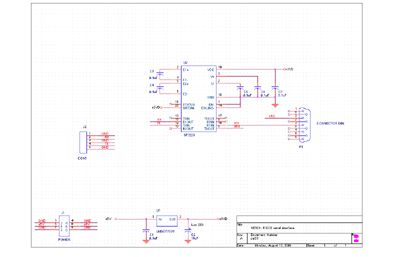ELEC 332
Background
Because of the limited number of pins on the
MSP430F2012,
we can't afford to use 8 of them to convey a byte of information
to another
device.
Instead, we must rely on serial signaling which requires
between one and four
lines.
There are a variety of standard protocols available,
some of which are supported in hardware by the MSP430
and others which must be handled in software.
This week we will look at two of these,
asynchronous SIO and I2C.
This Week's Circuit
Actually, there are two new circuit modules in this week's exercise.
The good news is that one of them has already been fabricated
(like the connector and potentiometer modules last week).
The bad news is that not only will you have to assemble the other,
but you will also have to
design it and
lay it out.
Here's the first one, an RS232 serial interface:

(Click to enlarge)
This is based on the Sipex SP3223 RS232 level converter.
We will use this to provide communication between the MSP430 and programs
running on the PC.
The other is an external D/A converter which we can use to overcome the deficiency
in the analog output capability of our chosen branch of the MSP430 family.
We'll have more to say about it later on in the program.

